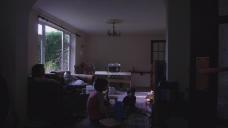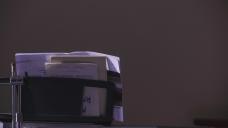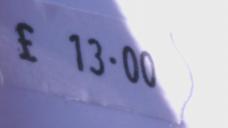
Digiscoping with the Panasonic GH2 (Benifits from the hacked versions)
-
For those of you who not herd of it or for some who think what is the point. Other might think what it got to do with hacking the GH2, - Well when we get to a stage when the bit rate is stable and to a point were its god like we can use it with digiscoping.
Think of it:
-Cleaner video Digiscoping at longer ranges with a high quality scope.
-Cleaner photographic digiscoping at longer ranges.
-Its possible with the EX-tele converter fuction to further increase the zoom.
If any of you guys have a Swarovski Scope or a Kowa Scope and do digiscoping. Then keep in touch because I have gatherd some photos off the internet of what the Panasonic GH2 can do with a Swarovski scope and its looks very interesting. Swarovski Scope cost £1700, so 5000mm zoom is a big +... and it costs £8000 for a 1300mm dedicated lense.
chris
www.creatingdvds4u.co.uk
Bring it on :-)
-
Another fine example what you can expect from a £1700 scope the is connected to a Panasonic GH2:
-
Yep thats why you need a remote shutter. However even that may give shake as at some point your going to have to stop the video side.
-
I didnt take the video but as I understand 50x = 5000mm & 25x =2500mm.
-
A few years ago I went with parafocal. I digiscoped. Later on I videoscoped, then I went Canon XL-1/2 route (7.2x crop), and now with GH2 I have three options to choose from : 1.9x crop, 4.94x crop with EXTele (similar to 1/2" camera) and 7.41x crop on 720p (similar to 1/3" camera).
With your scope: 1x=50mm 50x=2500mm. then there is the GH2=1.9x and 20mm=0.4x, All sums up to 2000mm.
But then, if you put 400mm lens on the GH2 (1.9x) with EXTele (2.6x), you get 1976mm, or even 2964mm
in 720p mode. -
Well I am hoping to get a vortex Razor HD scope later on. As its with all the reviews its up there with all the Swarovski Scopes. A lot cheaper than the Swarovski Scope so its the cheapest way too go over 800mm without spending £8000.
-
Digiscoping is looking very good method (when I get one), I been testing the different zoom ranges and shapnesses with my new hacked GH2. Quality is far better and you can take snap shots or screen caps of the video. This can be used as an alternative method to takeing photos or if your in the posistion were you cannot switch quickly between the two.
I be away in OZ and African so I get the chance to test my hacked GH2 in good light, were I am sure I will get some amazing shots that are far, far better than before to mix in premeire CS5
Its all good chaps. -
Some Tests I did with my Panasonic 300mm lense:
-
Now thats take a closer look:
-
It would be interesting to know what range this pigon was, then I could know If I saw something I'd get a good idear if I'd be able to take a video of it. I'd expect I will invest in a rangfinder soon and I know were I can get a good one for £140 - 1600 yard with slope messurement.
-
Here's a shot of the moon with some bird flybys. I used the GH2 , Chris's 44m hack and a Celestron C8 telescope, focal length 2000mm:
-
Looks good, I been looking to getting a spotting scop or telescope for digiscoping but its hard to find the right one for the right price. Its been very interesting testing the ETC mode with the new hack and it makes a difference and allows for longer zooms. How does this telescoping perform would you say. As good as a dedicated dedicated lense. I mean you cannot get the same quality from a £13,000 dedicated lense, but the hack does increase the quality so how would you say the quality is very userable?
-
ajskxbasdjqgaw, sorry, i made a question that it has been answered up there, sorry, don´t know how to delete this post :p
-
I have 3 large Askania telescopic lenses fro a 1960's satellite tracking system
& have never taken the huge things out of their cases.
Would the be useful for this purpose? -
It depends if you can adapt the lense system to a micro 4/3 camera mount. Micro 4/3's system is different too most other 35mm cameras so unless you can find a suitable Micro 4/3 to (what ever mount it is) then thats all I can say. If you rally want to save your self some money e.g. buying a £13,000 1300mm dedicated lense then yes its great. I am using a 100-300 Panasonic Lense and it can go up to 1560mm and because of the hack it doesn't loose that quality and suffer from compression artifacts e.t.c
I have just been testing the zooms on different distant objects and they must be at least 300-400 yards away and I paid £440 for the 100-300mm lense so I have saved myself some bucks with the hack. -
Hi all,
I was inspired by this thread and it was a really warm and clear night here in the UK so I dug out my Meade telescope. It's ages since I used it, and didn't have a set of batteries to run the motorised base. There's also a barrel thing that looked like it should mount a camera somehow and up till now I'd ignored this thing, but I discovered it fits into my M42-M4/3 adaptor, and then I found a cap on the telescope that unscrews to allow the whole lot to attach together, so of course I had to try it all out.
This little video is the raw mts file - taken at 320ISO at 1/25, 24H (I think - although for some reason the bitrate is really low at about 2mbps according to Streameye). Tricky to get the features of Jupiter AND the moons - they looked spectacular in the eyepiece of the telescope, but that's a huge dynamic range. I did some stills using the Silkypix RAW developer software, but to be honest couldn't get any better images than the video so I think it must really test out the dynamic range of the system.
I also tried the EX mode but it was almost impossible to focus because any movement would send the object whizzing off the screen, and then I'd lose it, and have to go back to regular mode just to find it again. The telescope has a motorised base (with the remote control) which keeps the objects stationary, and if I go out again I'll set that up and that should make life a bit easier. I'll do that if I get another warm, clear night.
So this video is in normal 24H mode without ETC.
EDIT: from a bit of reading today, I realise serious astrophotography needs special 16-bit cooled sensors etc - and probably a better telescope than the one I've got - mine's 1500mm f14 - and presumably a lot of patience. Maybe it's the quality of the optics, or maybe I'm not doing something right but it's not as spectacular as it looked through the eyepiece and (for example) there's a bit of CA on the object - don't know why that happens but I suspect it could be temperature issues.
-
Just for comparison here's what a telescope can do compared with the stock lens (uploaded from a laptop with no photo editing so ignore the bad exposures - for some reason the in-camera frame grab produces a strange black level). The photos are unretouched in-camera full-frame grabs from video and use the stock 14-140 lens apart from the last photo, which is with my Meade 105 ETX (1500mm f14), centered on the price tag on the right-hand book.
Camera is at exactly same position for both lenses. Hope it's useful to anyone wondering what a telescope could do in everyday situations - and yes, we're replacing that curtain rail!
The four photos are:
14-140 at 14mm
14-140 at 140mm
14-140 at 140mm and EX mode
Meade 1500mm and EX mode (telescope image focussed directly on camera sensor)
Distance to book is 7m, and price tag is 2cm across
It's amazing how "close" you can get with the telescope. If you stretch out your arm and little finger, the width of your little fingertip is 1 degree. You can fill the frame with something about half of that width!
I'm less sure of its application - the image is very difficult to keep stable at that magnification even with a decent tripod as the slightest movement or outdoor wind will shake the image. Focussing is also a challenge. But maybe it might be useful for situations where you need to keep your distance - photographing very slow-moving poisonous animals, or doing portraits of people who have extremely bad breath, or - I guess - checking out prices of things in shops that you're too shy to visit.
 14mm.JPG1920 x 1080 - 258K
14mm.JPG1920 x 1080 - 258K
 140mm.JPG1920 x 1080 - 195K
140mm.JPG1920 x 1080 - 195K
 140EX.JPG1920 x 1080 - 287K
140EX.JPG1920 x 1080 - 287K
 meade1500EX.JPG1920 x 1080 - 316K
meade1500EX.JPG1920 x 1080 - 316K -
>hotographing very slow-moving poisonous animals, or doing portraits of people who have extremely bad breath, or - I guess - checking out prices of things in shops that you're too shy to visit.
Much like your usage samples list. -
Exactly - I'm always afraid to go into music shops - often you encounter at least one of the other hazards too!
-
Hello Vitaliy & Mark_the_Harp welcome to my post, nice to see Vitaliy taking time out for the hack.
-
A spotting scope is being made by SLRmagic for a micro 4/3 camera. Supposely it going to be great thing and the best thing since sliced bread but its only $400 so will we notice the quality compared to top of the range scopes?
http://www.43rumors.com/page/2/ -
I don't plan to continue with this topic and so I will be continuing with the "Long Zooms From Micro 4/3" topic as lots of in depth research shows that dedicated lenses (if the right one is used). Will produce just as good as Digiscoping method if not better,- At a cheaper price if the right supplier is found (Hong Kong)
Start New Topic


Howdy, Stranger!
It looks like you're new here. If you want to get involved, click one of these buttons!
Categories
- Topics List23,964
- Blog5,723
- General and News1,342
- Hacks and Patches1,151
- ↳ Top Settings33
- ↳ Beginners254
- ↳ Archives402
- ↳ Hacks News and Development56
- Cameras2,361
- ↳ Panasonic990
- ↳ Canon118
- ↳ Sony154
- ↳ Nikon96
- ↳ Pentax and Samsung70
- ↳ Olympus and Fujifilm99
- ↳ Compacts and Camcorders299
- ↳ Smartphones for video97
- ↳ Pro Video Cameras191
- ↳ BlackMagic and other raw cameras121
- Skill1,961
- ↳ Business and distribution66
- ↳ Preparation, scripts and legal38
- ↳ Art149
- ↳ Import, Convert, Exporting291
- ↳ Editors191
- ↳ Effects and stunts115
- ↳ Color grading197
- ↳ Sound and Music280
- ↳ Lighting96
- ↳ Software and storage tips267
- Gear5,414
- ↳ Filters, Adapters, Matte boxes344
- ↳ Lenses1,579
- ↳ Follow focus and gears93
- ↳ Sound498
- ↳ Lighting gear314
- ↳ Camera movement230
- ↳ Gimbals and copters302
- ↳ Rigs and related stuff272
- ↳ Power solutions83
- ↳ Monitors and viewfinders339
- ↳ Tripods and fluid heads139
- ↳ Storage286
- ↳ Computers and studio gear560
- ↳ VR and 3D248
- Showcase1,859
- Marketplace2,834
- Offtopic1,319






